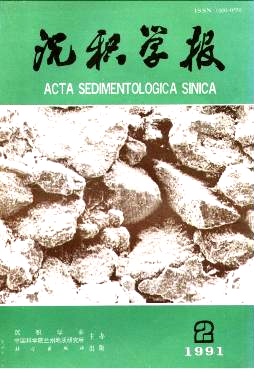The Occurrence and Significance of Halite in Eastern Ordos
- Received Date: 1989-03-08
- Publish Date: 1991-06-10
Abstract: Block halite had been found in three test-wells from the upper Majiagou Formation of Ordovician in eastern Ordos.There are four layers of bedded halite whichs'thickness is 114 to 157m, and serverat thin layers of anhydrite and dolomite interbedded in it, the content of pure salt is about 90 percent. The dlomite and anhydrite have different characters above and below the block halite. The dolomites above have obvious shallow-water depositional features; but the dolomites below are characterized by deepwater depositional features. There are four types of halite: black opaque matrix, black transparent crystals,.white transparent crystals and reddish transparent crystals.The most common is the third type followed by the fourth.The first two contain much more anhydrite, and the fourth contains more KCl. The block halite is composed by many cycles which consist of penesaline, saline and hypersaline sediments in vertical. The first is made up of dolomite and anhydrite; the second, dolomite and anhydrite and salt; the third, anhydrite and salt (often reddish crytal salt).Anhydrite with thickness less than 10cm usually 2-4cm is often found in hah'te.Vertically, the thickness of pure salt is less than 1 m. The block halite was formed in a short period and a deep water environment, but the dolomite and anhydrite above it have obvious shallowwater depositional features, it indicated that the forming of halite had filled the geomorphological depression. The occurrence of halite is significant for survey of KCl-bearing salt deposits and gas pool.
| Citation: | Zhang Jisen, Zeng Shaohua, Huang Jiansong, Ma Zhenfang, Wang Zezhong. The Occurrence and Significance of Halite in Eastern Ordos[J]. Acta Sedimentologica Sinica, 1991, 9(2): 34-43. |






 DownLoad:
DownLoad: